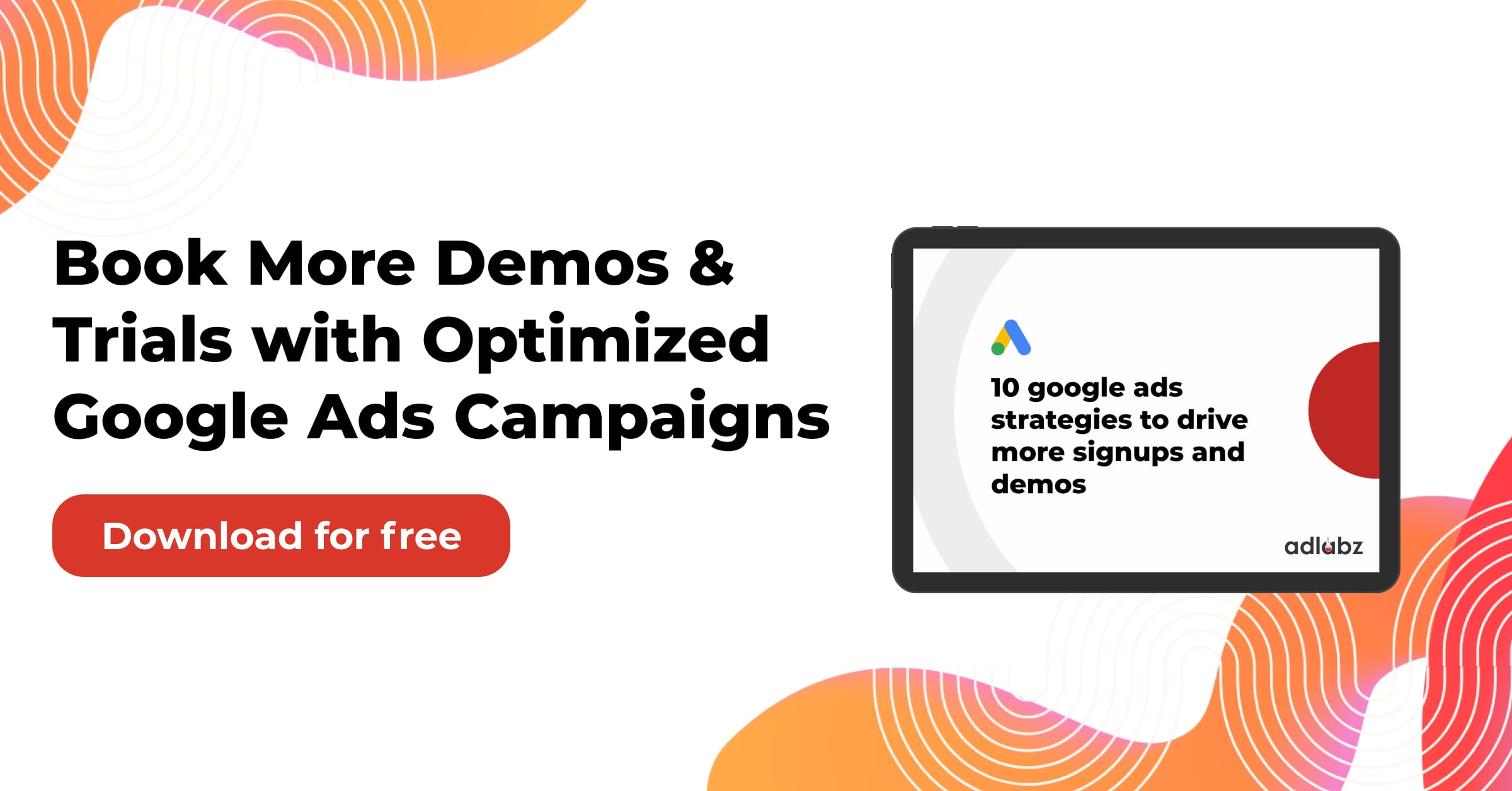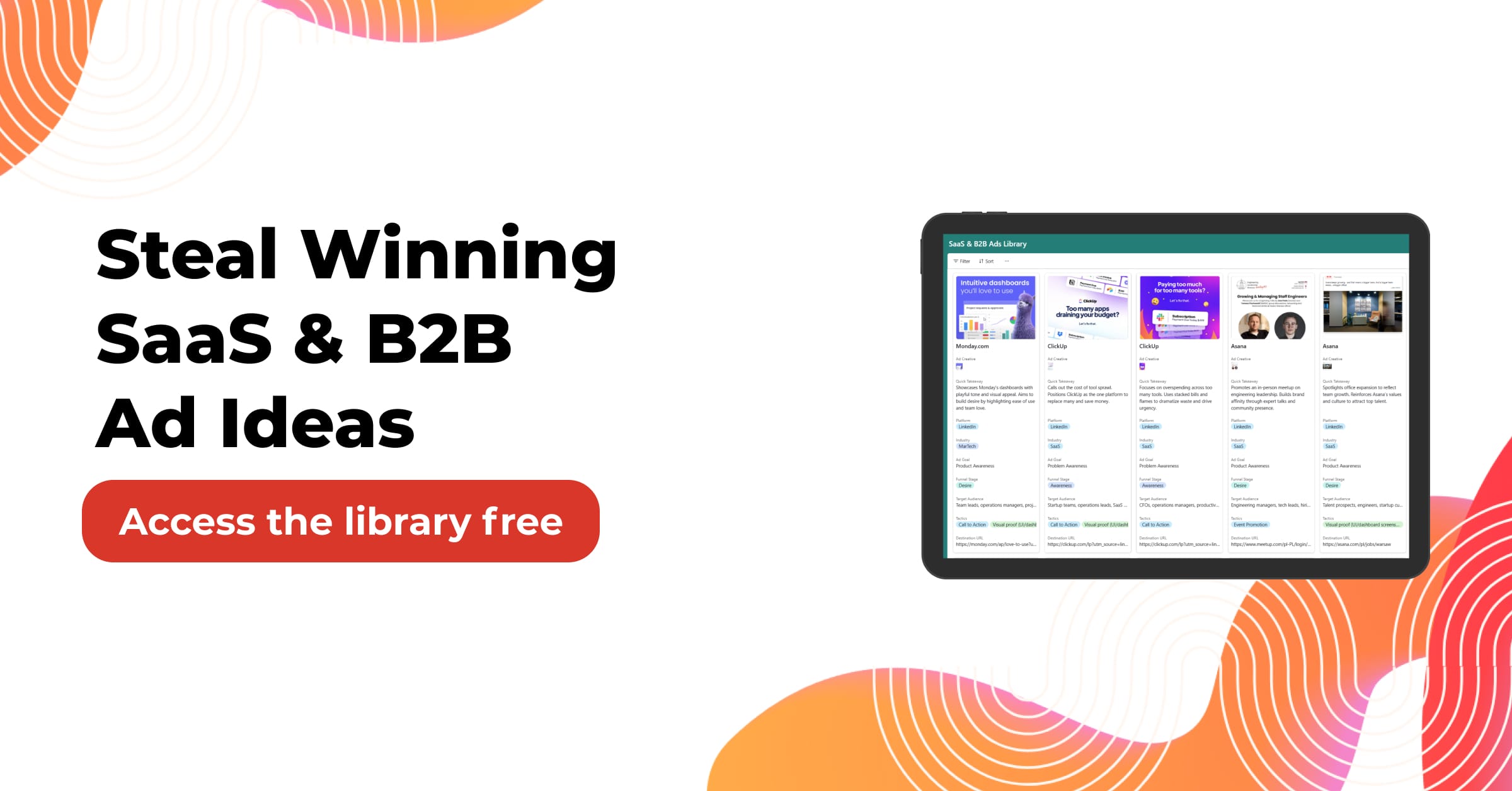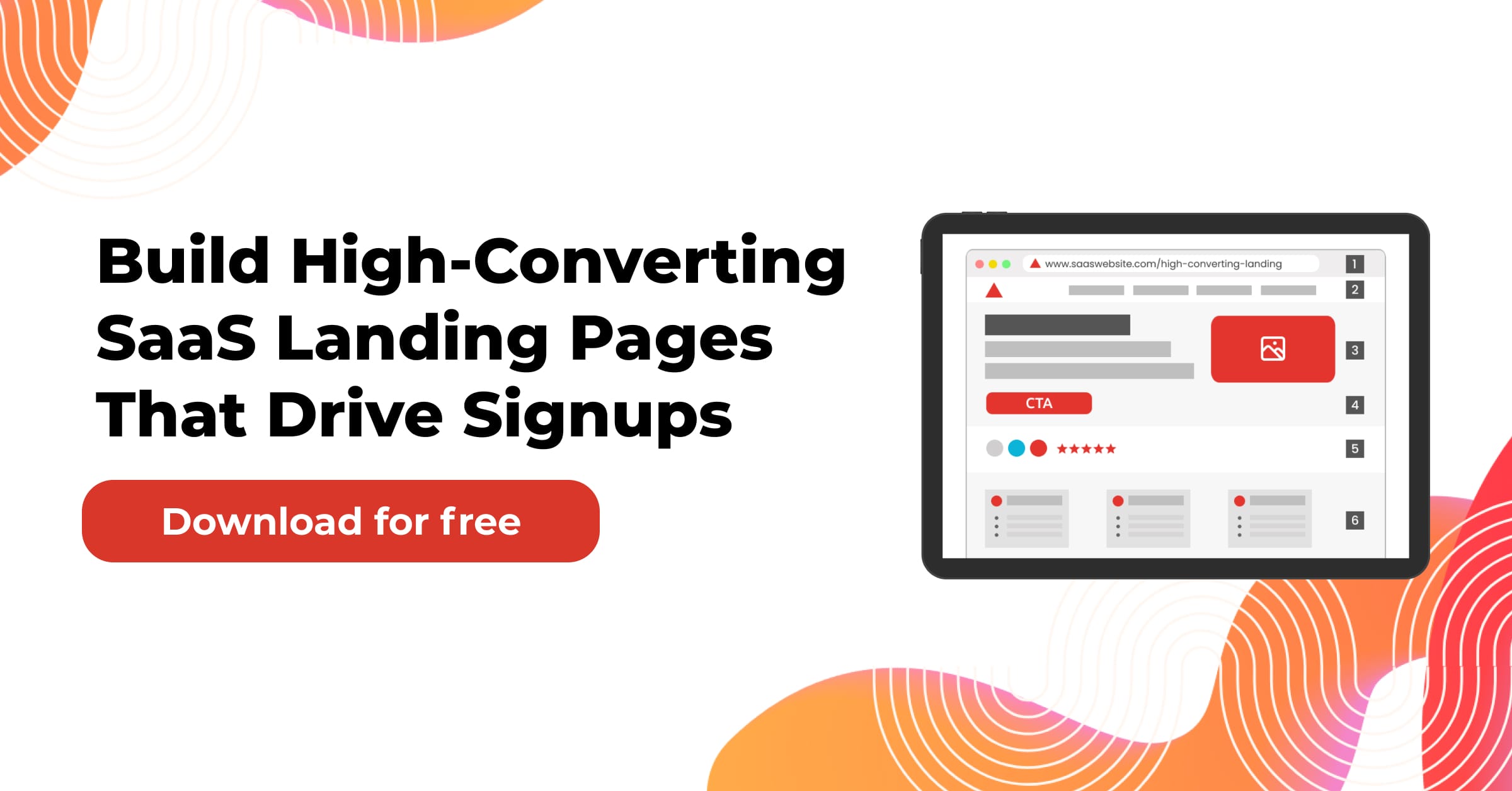Why Is It Important to Classify Your SaaS Product Correctly?
Classification isn’t just a formality — it defines how your product is marketed, who uses it, and what growth path it follows.
Misclassify your SaaS product, and you risk:
- Targeting the wrong audience
- Choosing the wrong monetization model
- Confusing investors and customers
Example: A product designed for customer support might mistakenly position itself as a sales enablement tool. This can derail marketing efforts and delay product-market fit.
Jump to:
How Do You Identify the Right Use Case for Your SaaS Product?
The foundation of classification starts with identifying the core problem your product solves.
Ask:
- What business function does it support?
- Is it operational (e.g., logistics), strategic (e.g., forecasting), or creative (e.g, content generation)?
- What’s the daily user intent?
Table: Example Use Cases and Classification
| Use Case | SaaS Product Example | Category |
|---|---|---|
| Email automation | Mailchimp | Marketing Automation |
| Customer ticketing | Zendesk | Customer Support |
| Predictive sales AI | Clari | Sales Intelligence |
| AI writing assistant | Jasper | Content Creation |
Tip: Start with user stories. “A support rep uses our tool to…” is more valuable than abstract features.
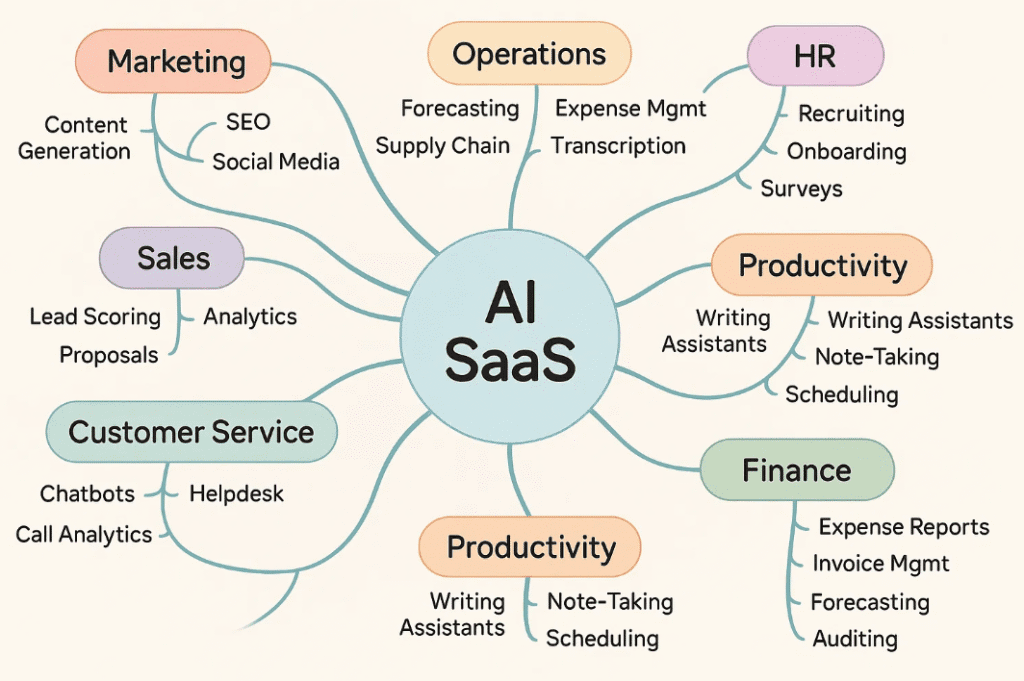
What Role Does the Buyer Persona Play in Product Classification?
Many SaaS founders forget this: classification depends on who’s buying.
A CFO and a Head of HR look at the same tool through totally different lenses.
Questions to Explore:
- Who controls the budget?
- Who uses the product day to day?
- Is it C-level, mid-management, or operational teams?
Example: An AI dashboard tool might seem like “data analytics,” but if sold primarily to COOs, it falls under “Operations Intelligence.”
How Does Your Pricing Model Influence Classification?
A B2B enterprise tool with a per-seat model is not the same as a self-serve tool with a freemium tier.
Related Article: https://www.adlabz.co/is-the-freemium-saas-business-model-dying
Your SaaS product classification should reflect:
- How buyers expect to engage
- What sales model supports growth
Related Guide: https://youtu.be/uOq0XH0LDZ8?si=nPh7hKXbnl2ziqx6
Table: Pricing Model vs Product Category
| Pricing Model | Common SaaS Category |
|---|---|
| Freemium | Productivity, Collaboration Tools |
| Usage-Based | Data Infrastructure, APIs |
| Per Seat | CRM, HR Tech |
| Flat Subscription | Content Creation, LMS |
Tip: Your monetization model impacts how users experience your product — and therefore, how it’s perceived.

What Technology Stack Signals Product Type?
The underlying tech — especially when using AI — plays a large role in how your SaaS product is classified.
Consider:
- Is it built on LLMs (language models)? > likely content generation
- Does it use real-time ML predictions? > likely forecasting or anomaly detection
- Integrated APIs? > more likely infrastructure or devtools
Example: A SaaS product that utilizes OpenAI, a Chrome extension, and Notion integration is likely to fall under the category of “Productivity AI.”
How Do You Handle SaaS Products That Span Multiple Categories?
Some AI SaaS products touch several areas — analytics + workflow automation + reporting.
In such cases:
- Choose a primary classification based on user intent
- Highlight secondary capabilities in messaging, not positioning
Case Example: Notion AI is a writing tool, task manager, and wiki. But in positioning, it leads with Productivity + Knowledge Management.
Tip: Avoid the “all-in-one” trap. Be known for solving one thing brilliantly.

Why Is This Classification Important for Investors and Go-To-Market?
Investors don’t fund software. They fund categories with growth.
You need to tell a compelling category story:
- How big is the TAM (Total Addressable Market)?
- What wave are you riding (AI, PLG, vertical SaaS)?
- Who are your real competitors?
Example: A niche AI writing tool might have trouble raising funds unless it positions itself within a growing category like “AI-Powered Sales Enablement.”
How Does Vertical vs Horizontal SaaS Impact Product Labeling?
Vertical SaaS serves one industry deeply (e.g., legal, healthcare).
Horizontal SaaS solves a common function across industries (e.g., CRM, HR).
Table: Vertical vs Horizontal SaaS Traits
| Trait | Vertical SaaS | Horizontal SaaS |
|---|---|---|
| Target Market | One niche industry | Multiple industries |
| Customization | High | Moderate |
| Example | Vetcove (vets) | Asana (tasks) |
Classification should reflect this. Don’t label a vertical tool as general-purpose.
What Signals Does Google Use to Understand Your SaaS Product?
If you want traffic, you need to speak in Google’s language.
Make sure:
- Your homepage title and H1 reflect your category
- Your meta description names the use case and buyer
- Your URLs and blog structure match the product classification
Example:
- Bad:
/solution - Good:
/ai-content-generator-for-saas-marketers
Tip: Google’s AI also classifies products — poorly written metadata confuses rankings.
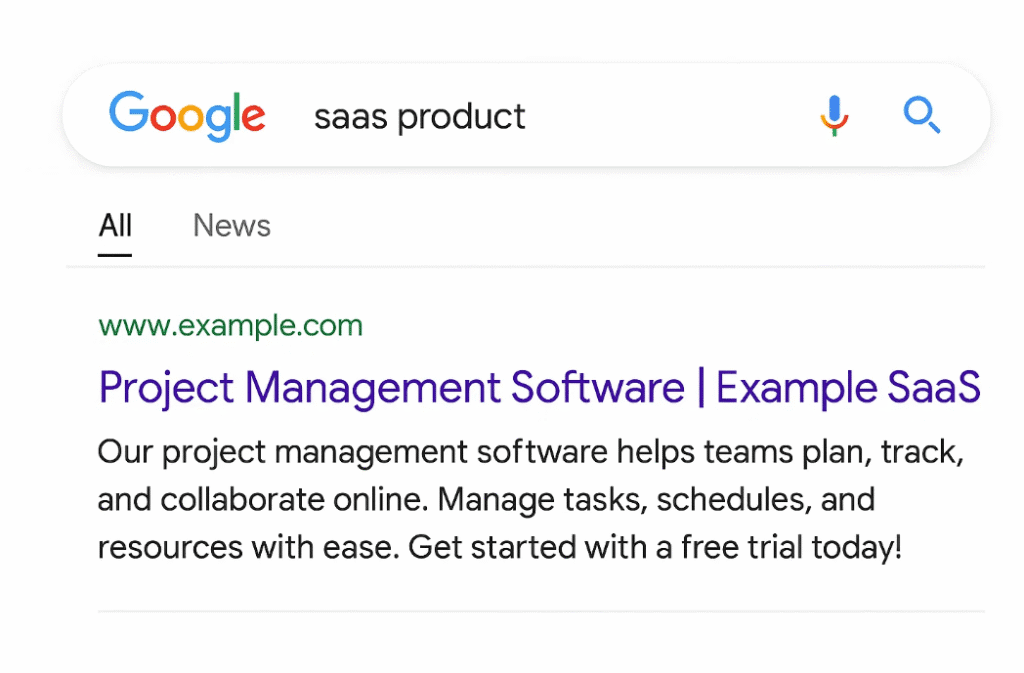
What If Your SaaS Product Is Still Evolving?
It’s tempting to delay classification until the product is “ready.” That’s a mistake.
Classification helps guide:
- Product roadmap decisions
- Early growth experiments
- Investor conversations
Approach:
- Choose a temporary classification based on the strongest use case
- Refine messaging as you get feedback
- Re-position when you see product-market fit
Example: Figma started as a design tool, evolved into a collaboration platform, and then leaned into becoming a “Design System Platform” as the category developed.
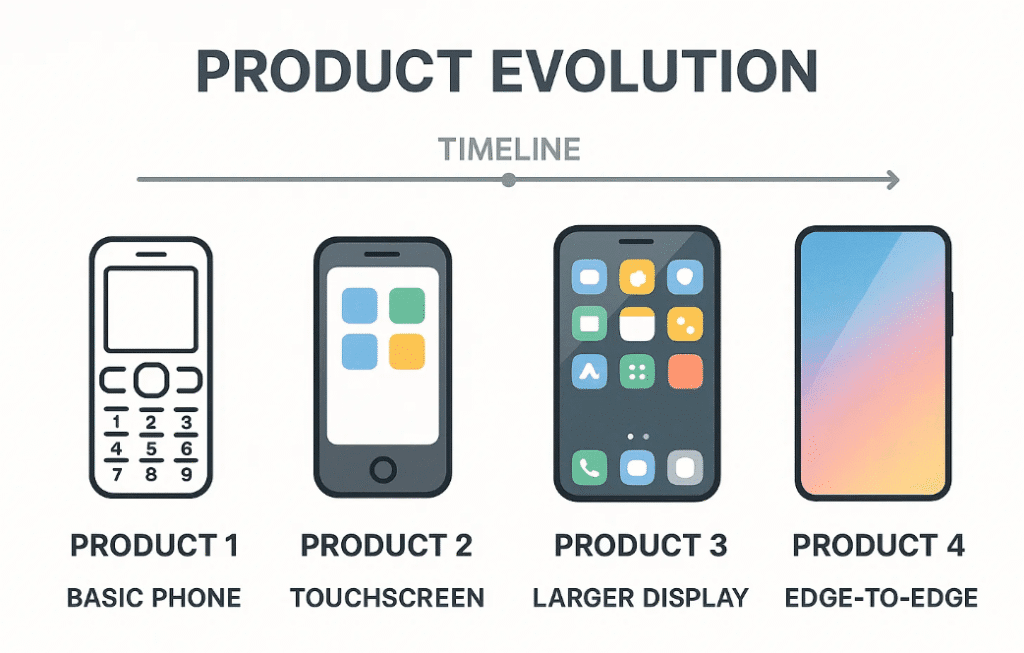
How Does Product Classification Impact SEO and Content Strategy?
Once your SaaS product is categorized, it becomes easier to develop a targeted SEO strategy.
Without proper classification, your content will attract:
- The wrong search intent
- Low-converting traffic
- Keyword cannibalization across pages
Example: If your AI product is a “Sales Email Generator,” your blog strategy should center around:
- “AI cold email tools”
- “B2B sales automation”
- “Follow-up email sequences using AI”
Rather than vague keywords like “AI writing” or “content tools.”
Must Watch: https://www.youtube.com/shorts/Ft5A6pE0vhg
Actionable SEO Tactics:
- Use your classification keyword in your homepage title, H1, and the first 100 words
- Build supporting content clusters that reflect use cases and the buyer journey
- Target long-tail keywords with high commercial intent
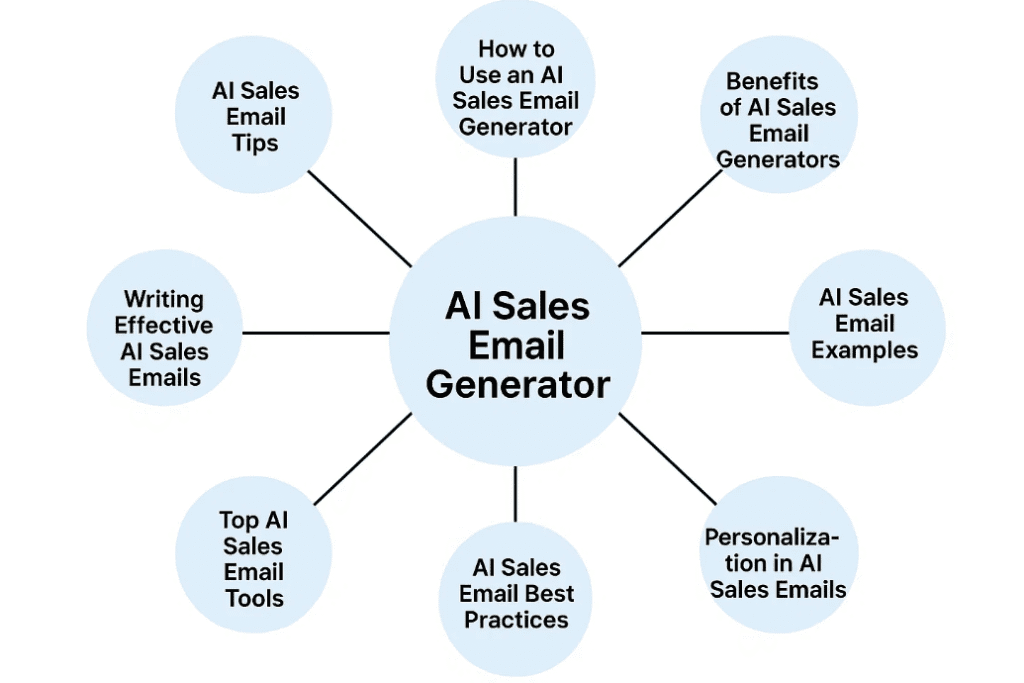
How Can You Reposition Your SaaS Product Without Confusing Users?
Sometimes your initial classification no longer fits. Maybe you discovered a stronger use case. Or maybe market trends shifted.
You can reposition — but do it with care.
Steps to Reposition Successfully:
- Start with messaging – update your homepage headline, feature list, and benefit statements.
- Refactor your navigation – shift the structure of your site to reflect the new use case.
- Tell a clear story – publish a blog or email titled “Why We Repositioned.”
Example: Airtable moved from “spreadsheet meets database” to “AI-powered work management.” They didn’t hide the shift — they explained it to users.
How Should Your Classification Guide Feature Development?
Feature prioritization should support your core classification, not distract from it.
Ask:
- Does this feature deepen our main use case?
- Will it serve our primary buyer?
- Is it expected in our category?
If the answer is no, it might be a distraction.
Example: A customer onboarding tool shouldn’t prioritize an in-app chat feature unless it directly enhances the onboarding experience.
Tool Kit for SaaS Founders: https://www.youtube.com/watch?v=BP81a0_6dtI&list=PLVQr4q_OlhZYyYtQcO59clWUHMv8WDOYL
Tip: Use your classification as a filter for your roadmap.
How Can You Benchmark Your SaaS Product Against Others in the Same Category?
Proper classification helps you compare apples to apples.
Start by analyzing:
- Features offered by top products in your category
- Pricing models and onboarding flows
- Content and messaging on their website
Table: Competitive Benchmarking Framework
| Metric | Your Product | Competitor A | Competitor B |
|---|---|---|---|
| Core Use Case | AI cold emails | AI sales copy | AI email CRM |
| Target Persona | SDR managers | Copywriters | Sales reps |
| Entry Pricing | $59/mo | $29/mo | $99/mo |
| Free Plan | Yes | Yes | No |
| Setup Time | 10 min | 5 min | 15 min |
Tip: Don’t mimic. Use competitor gaps to define a stronger category position.
How Does Classification Affect Product-Led Growth (PLG)?
If you’re using PLG, classification influences:
- What value do users see during onboarding
- How fast they activate
- What features get unlocked in the free plans
For PLG to work, your SaaS product’s category must be instantly clear.
Example: Calendly works because users instantly understand it’s a “Meeting Scheduler.” No confusion, no friction.
Tactic: Make sure your signup flow reflects your classification. If you’re a “Customer Feedback AI Tool,” let users create a survey within 30 seconds of signup.
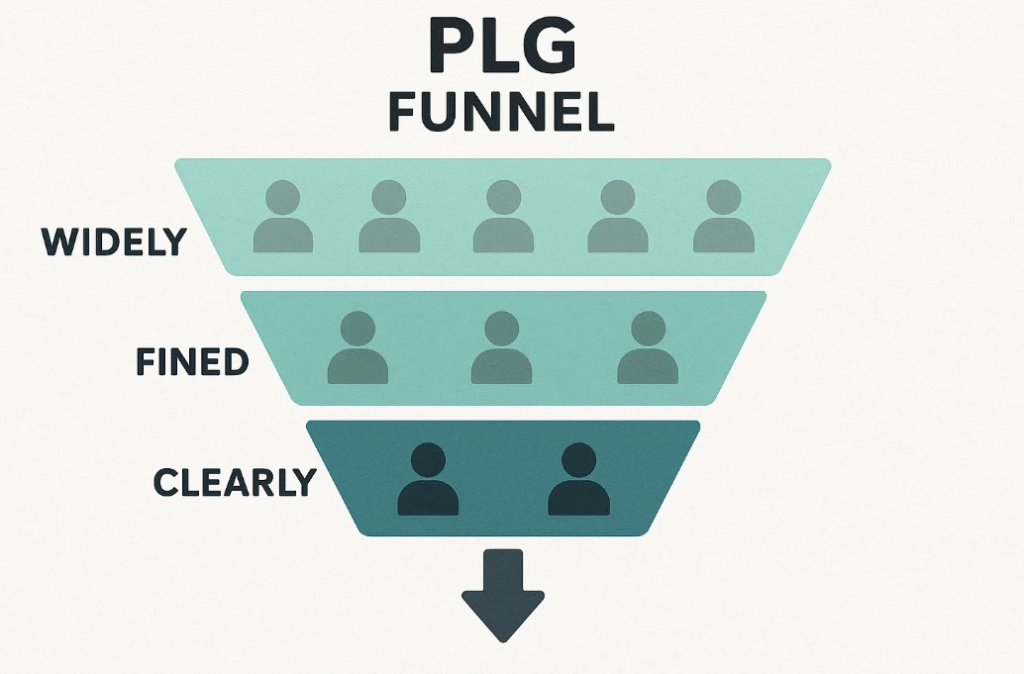
Can AI Help You Refine Product Classification?
Absolutely. AI can help you analyze usage data, feature heatmaps, support tickets, and even NPS comments to reveal how users see your product.
Tools You Can Use:
- OpenAI or Claude to classify feedback at scale
- Hotjar for behavioral heatmaps
- ChurnZero for segment-based feature adoption tracking
Example Prompt:
“Categorize these support tickets based on perceived product value and use case.”
Over time, this helps you identify your strongest value pillar and reinforce that in your classification.
How Should You Involve Your Team in the Classification Process?
Your internal teams need clarity too, especially marketing, sales, and support.
Without clear classification:
- Sales talks about different benefits than what marketing promotes
- Support uses different terminology from what the product defines
Tactic: Run a One-Hour Alignment Workshop
Ask each team:
- How would you describe the product in one sentence?
- Who’s the primary buyer?
- What problem are we solving?
Use the overlap as your true category anchor.
Can Classification Influence Your Product’s Valuation?
Yes, especially when raising capital or preparing for an acquisition.
VCs and acquirers don’t just buy products — they buy into categories.
A tool classified under “AI-Powered Sales Automation” with a $10B TAM sounds more attractive than a “workflow utility” with an unclear market.
How to Present Your Classification to Investors:
- Show your category clearly on your pitch deck cover
- Map yourself on a quadrant (e.g., cost vs. complexity)
- Show evidence of traction in your niche

How Do You Use Product Classification to Attract the Right Early Adopters?
Every successful SaaS product starts by resonating with a small group of enthusiastic early users. These early adopters aren’t just your first customers — they’re your first marketers. But they only convert if they immediately understand what your product is, what it solves, and who it’s for.
That clarity starts with correct classification. When your messaging aligns with a clear product category, early adopters feel like the product was built for them. It lowers their skepticism, reduces onboarding friction, and increases their willingness to provide feedback or refer others. SaaS founders should build their launch content and onboarding flow around the product’s category — not just features — so that early users feel aligned with the problem and the promise right away.
How Can Classification Shape Your Fundraising Narrative?
For SaaS founders, raising capital is not just about showcasing traction — it’s about telling a category-level story. Investors often look for alignment with market trends, scalability within a known space, and competitive advantage within a defined category.
Product classification gives shape to that narrative. By aligning your SaaS product with a fast-growing market, like “AI Sales Automation” or “Vertical SaaS for Legal Ops,” you’re helping investors visualize your growth potential. It also makes it easier to present your total addressable market (TAM), segment your competitors, and show how you stand out within that segment. A well-chosen classification brings structure to your pitch and confidence to your valuation.
What Role Does Classification Play in Building a Winning SaaS Brand?
A great brand isn’t just visual — it’s conceptual. And for SaaS products, that concept is often defined by your category. When people talk about you, they need a simple label: “Oh, it’s like [X] but for [Y].” That label comes directly from how you’ve classified your product.
The category you choose sets expectations for your voice, tone, design, and marketing campaigns. If your product is classified as an enterprise analytics tool, your brand needs to feel precise, secure, and authoritative. If it’s an AI productivity tool, the brand should feel fast, modern, and frictionless. Classification becomes the foundation on which your visual and verbal identity is built.
How Can You Align Sales and Marketing Around Product Classification?
One of the biggest challenges SaaS founders face as they scale is messaging inconsistency. Marketing says one thing. Sales says another. Customer success offers a third version. When that happens, leads drop out, deals stall, and support tickets rise.
A clear product classification solves this by creating a common language. When everyone on your team understands exactly what category you’re in — and what problems you’re solving within that category — alignment becomes natural. Your sales decks, landing pages, demo scripts, and onboarding emails start to reinforce the same story. This consistency builds trust, shortens sales cycles, and strengthens your brand’s credibility at every touchpoint.
Frequently Asked Questions (FAQs)
1. What is SaaS product classification, and why does it matter?
SaaS product classification is the process of defining what category your software belongs to — whether it’s sales automation, customer support, project management, or another function. It matters because it influences how customers perceive your product, how you market it, how you position it against competitors, and even how investors evaluate it.
2. How early should I define my SaaS product’s classification?
Ideally, you should define your classification before launching publicly. Even a rough category helps shape your messaging, pricing, and go-to-market strategy. However, it’s okay to refine your classification later as real usage patterns and customer feedback emerge.
3. What if my SaaS product fits into multiple categories?
It’s common for SaaS products to have overlapping features, but you should always lead with one primary classification. Choose the one that best reflects your core use case and your ideal buyer. You can still highlight secondary functions, but your main classification should anchor your brand and messaging.
4. Can my classification change over time?
Yes. As your product evolves and your user base grows, it’s natural for your classification to shift. The key is to make the change deliberately and clearly. Update your messaging, marketing materials, and product pages to reflect the new category and explain the reasoning behind the change.
5. How does product classification affect my SEO strategy?
Search engines rely on clear signals to understand what your product is about. By choosing a specific classification, you can build focused content clusters, use category-specific keywords, and rank for more relevant searches. This leads to higher-quality traffic and better conversion rates.
6. Is classification still important if I’m building a vertical SaaS product?
Absolutely. It’s even more critical for vertical SaaS. Your classification should reflect both the industry you’re serving (e.g. legal, healthcare, education) and the problem you’re solving. This helps you stand out from horizontal tools and connect more deeply with your niche audience.
Summary: Let Your Classification Do the Heavy Lifting
The right classification…
- Attracts the right buyers
- Simplifies your marketing
- Inform your roadmap
- Positions you in a fundable, scalable niche
If you get this wrong, every other piece — SEO, messaging, monetization — suffers.
If you get it right, it amplifies growth across the board.
Must Watch:



